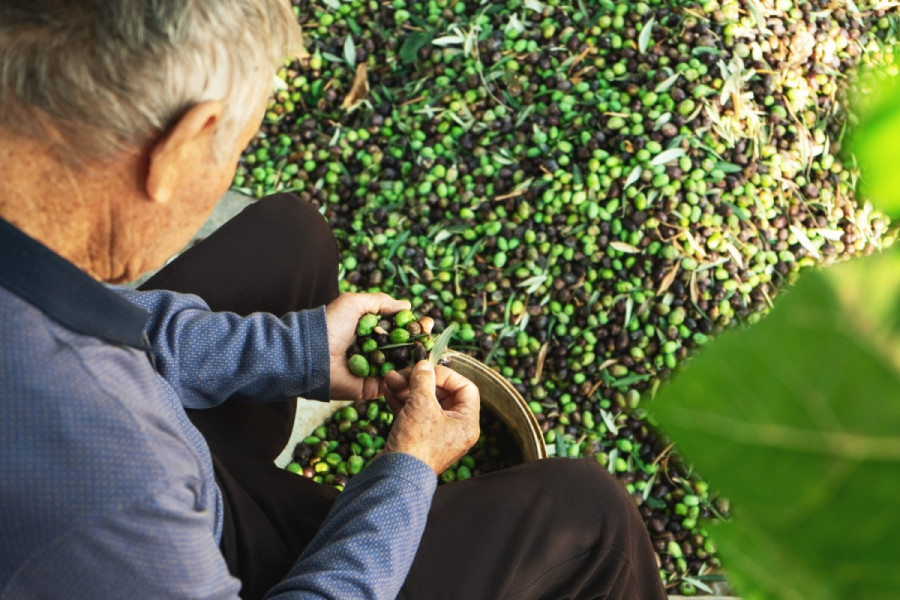Columns
The lost prospects of olive farming
After initiating an olive zone, it is now crucial for local authorities to take ownership of the project.
Roshee Lamichhane
During my recent visit to Bajura District, I explored olive farming and witnessed its current state in the region. My interaction with Janesh Bhandari, a local civic campaigner, revealed the unfortunate stagnation of a once-promising project. Funded by the Italian government with approximately 1.4 million Euros allocated for Kathmandu, Dolpa and Bajura, this project saw half of the funds directed to Bajura alone. Preliminary research identified that out of 28 species planted, 24 bore fruit, and 10 were recommended for Nepal.
Following the success of the pilot study, the Government of Nepal (GoN) has designated Bajura, encompassing the municipalities of Jagannath, Himali, Swamikartik and Budhinanda, as an olive zone. In 2016, an Olive Zone Implementation Unit was established under the Prime Minister Agriculture Modernisation (2015-25) Project. The main goal of this unit is to promote commercial olive farming and enhance the management and utilisation of natural olive forests to increase farmers’ incomes. Despite such significant investment in research, commercial olive farming remains unfruitful, owing to several challenges.
Prospects
Empirical evidence suggests that olive farming in Bajura could serve as a nature-based solution to diversify the local production system. Investing in both wild and domesticated olives could boost household incomes and generate employment in the region. Given the environmental, social and economic benefits, olive cultivation could enhance the resilience and well-being of smallholding farmers. Research also highlights olive as a crop with a high potential for income, employment opportunities and improvement in economic status.
Olive oil is a common product in Nepal, but olive wood handicrafts are globally popular. Handicraft items from olive wood fetch high prices, including wooden bowls and plates, which sell at a range of $20-70. Olive oil is also used in producing soaps, scents, skincare and other cosmetics. Nepal imported olive products worth $616,217 in 2022, which shows a year-on-year value growth of 70.38 percent. With olive oil prices in the Nepali market ranging from Rs2,000 to 3,000 per litre, the market potential for olive oil and its diversified products is substantial, making systematic cultivation a promising avenue for import substitution. The Prime Minister's Agriculture Modernisation Project has initiated a programme to construct infrastructure for olive farming and provide relief of Rs427,000 for 2,386 farmers in Bajura.
Challenges
Despite Bajura being designated as an olive production zone, several challenges hinder the commercial farming of olives. One major issue is the underutilisation of wild olives due to the lack of collection and processing centres. In addition to these, another challenge was the lack of a three-phase electricity line essential for the production centre's operation, rendering the plant dysfunctional at the moment.
Additionally, there is a significant mindset barrier among farmers and local people. Olive trees take five years to bear fruit, and most farmers attracted to faster-yielding crops like apples are reluctant to invest in olive cultivation. The farmers’ economic status exacerbates this reluctance, as they cannot afford to wait for such a long harvest period.
Another challenge is the lack of a technically skilled workforce. Some farmers have fallen short of the necessary knowledge about olive cultivation and its benefits, and others have shifted to high-value crops, abandoning traditional farming practices in the region. Educating them about the economic and health benefits of olive farming could prove beneficial.
Policy measures
Nepal can draw inspiration from Rajasthan, India, where the government actively promoted olive cultivation by introducing Israeli technology and operational models. The Government of India included olives under the national mission on oilseeds and oil palm. After eight years of nurturing olive saplings, this led to the successful launch of Rajasthan's first indigenous olive oil brand.
Similarly, Pakistan has seen impressive success in olive farming. In 2022, the country exported virgin and extra virgin olive oil worth $1.9 million. This achievement was enabled by a project launched in 2012 by the Pakistani government, in cooperation with the Italian government, called "Promotion of Olive Cultivation for Economic Development and Poverty Alleviation". This project, run through the Pakistan Agriculture Research Council (PARC), has provided Pakistani farmers with training on pruning techniques and technological support. As a result, Italy and Pakistan now enjoy an annual trade relationship worth €2 billion.
With the government initiating an olive zone, it is now crucial for local authorities to take ownership of the project and explore the commercial viability of olive oil extraction. Currently, only a few informed individuals at the policy level are aware of the prospects. Disseminating information to local farmers and communities is imperative, as olive is not a part of Nepal's traditional lifestyle and food habits. The government should implement policy measures such as incorporating olive farming into the curriculum of universities and schools. Agricultural universities should encourage students to intern in olive farming regions for practical experience.
Once commercial farming is established, Nepal should register with the International Olive Council to gain wider recognition. Agricultural documents should highlight olives as prospective crops, and proper national records should be maintained on the status of wild and commercially farmed olives. Additionally, it is essential to have trained technicians and experts to oversee olive cultivation and farming. With coordinated action from the government, local officials, farmers and other key stakeholders, olive cultivation could become a lucrative endeavour in Nepal. This could help diversify the country's agriculture sector and foster economic development.




 14.83°C Kathmandu
14.83°C Kathmandu.jpg)















